Day 4: Hitachi Seaside Park, the Kodokan
Table of Contents
Hitachi Seaside Park #
Although we’d largely missed cherry blossom season in Tokyo, there were still plenty of other flowers in season. This was most apparent when we went to Hitachi Seaside Park for the day in Hitachinaka, an hour and a half northeast of Tokyo by train.
Upon arriving at Katsuta Station at 9:30 a.m., I immediately popped into the travel center at the station to ask which bus we’d need to take to get to the park. I spoke in Japanese to the woman at the counter so it wasn’t until she gestured to the tourist maps available to us that she discovered we were American when I chose the English-language map.
She asked where in the U.S. we were from and when we told her Portland, Oregon, she got so excited. Apparently she lived in Portland in the 1990s and she still thought very fondly of it. The woman had already been kind and professional but when she heard we’d come from Portland, her demeanor became even warmer, as we if we were old friends. I felt kind of bad excusing ourselves to go catch the bus!
Downstairs at the bus circle, it was apparent the city was well-equipped for the hordes of Hitachi park visitors: There was a bus route running directly to the park from the station, and a table set up right by the bus platform where you could buy a combo bus pass and park admission.
Our bus was standing room only and we arrived at the park just after it had opened at 10 a.m. Already crowds of people were streaming through the ticket gates into the park.
As you know, I hate crowds but honestly the flower gardens at the park were so well-manicured and spread out that they were worth the visit. The park was big enough that even with the masses of people I didn’t feel smothered.
Upon entering the park, Van and I immediately made our way to the park highlight that everyone else was going to at this time of year: the nemophilia fields, these hills covered in charming sky blue flowers known as baby blue eyes.
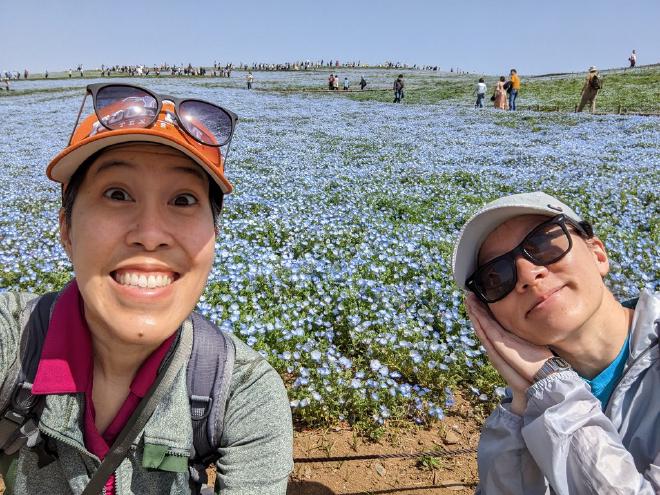
Wisely, the park doesn’t let you actually walk in the fields. They’re roped off and you walk alongside them on walking paths, which were packed with people and no small number of dogs. There were so many people there like us, excited to be taking pictures of the blooms and using them as a stunning background.
From the nemophilia fields, Van and moved on to the rest of the park (skipping the amusement park since it was an additional cost and we already had two major theme parks on the trip itinerary).
My next favorite garden (and this park had so many) was the park’s Tamago no Mori tulip garden, which was huge — at least in comparison to the last tulip garden I’d seen, Windmill Island Gardens in Holland, Michigan, during Tulip Time. Although both are obviously inspired by the tulip gardens of the Netherlands.
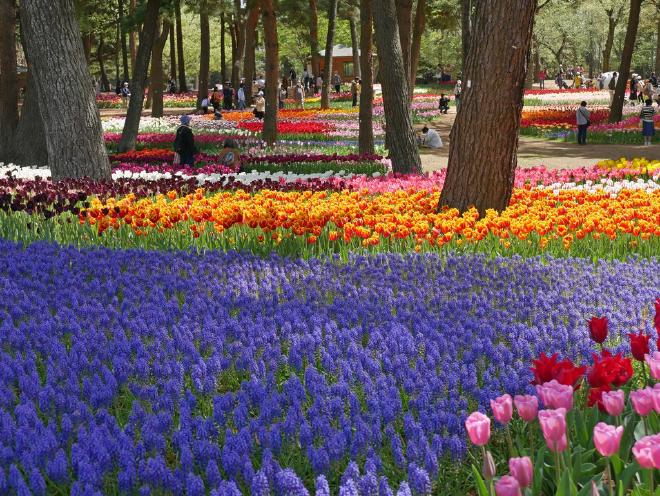
I loved the play of color, with some sections filled with only tulips of the same variety and color and others filled with a dazzling mix. Some were broken up with rivers of grape hyacinths. And behind the tulip garden were some people-sized egg sculptures with openings in them if you wanted to climb inside.
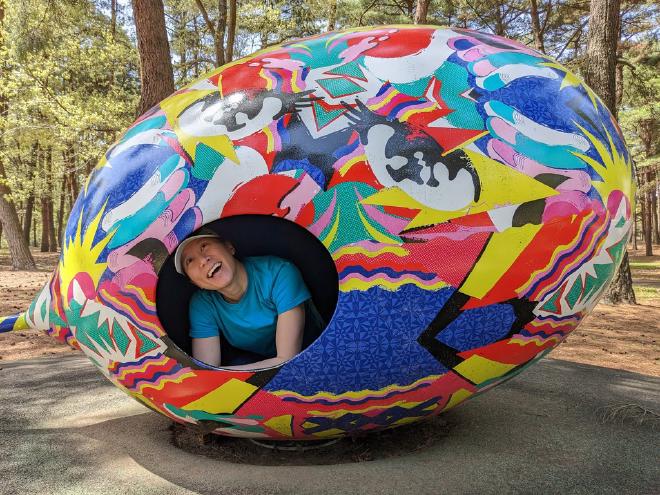
Once finished with the park, Van and I hopped on the bus back to Katsuta Station, where we popped into a convenience store to load up on food (don’t knock conbini food until you’ve tried it!) to eat on the train back to Tokyo for lunch.
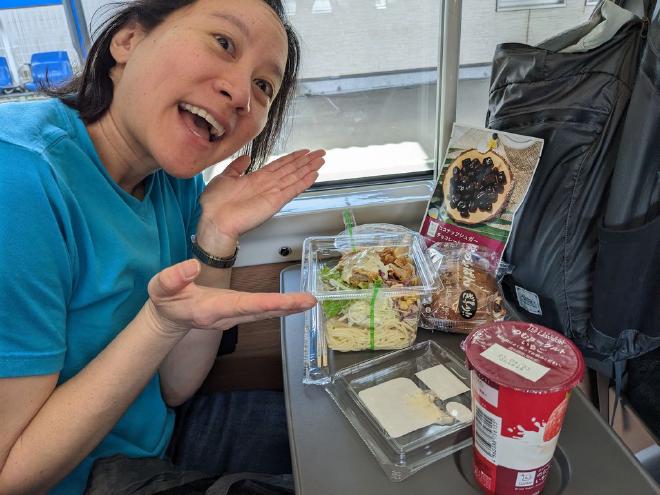
Kodokan #
Back in Tokyo, we got off at Suidobashi Station and walked to the Kodokan, known as the birthplace of judo. Going to a shiai (judo contest) at the Kodokan had been one of Van’s requests, and one such match was taking place this evening.
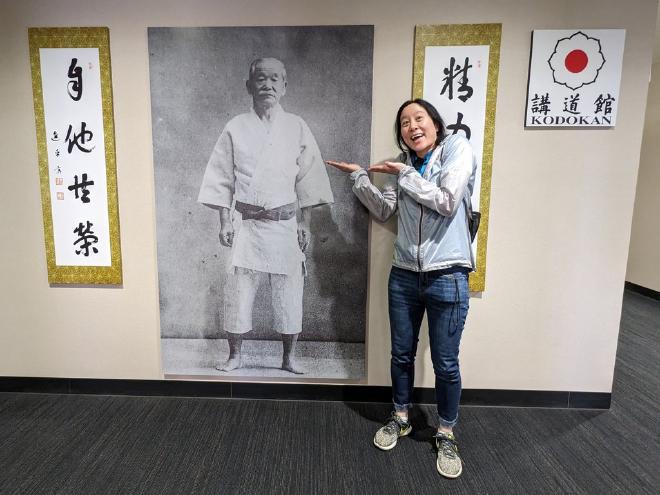
The contest didn’t start until 5:30 p.m. but Van had expressly wanted to get to the Kodokan by 4 p.m. to give her time to peruse its gift shop kiosk and visit its museum. She also took a photo with the sculpture of Kano Jigoro Shihan, the founder of Kodokan judo, which stood at the front of the building.
It was still early and I noticed there was a hardware store next door. I’d lost my beloved Zojirishi water bottle sometime the day before — it had fallen out of the side pocket of my day backpack — and was in search of another water bottle. I found a nice replacement at this hardware store (though it’s not a Zojirushi) that I took back with me to the U.S., which is very typical of the type of functional souvenir that I tend to get when I travel.
Back at the Kodokan, Van and I took the elevator up to the spectator seating area on the 8th floor. From the bleachers there, we were able to watch the participants of the shiai, men with 2nd dan and above, warming up for their matches.
The matches took place on two side-by-side courts. During the course of the shiai, a variety of other international visitors filtered in and out of the spectator area. We watched until Van had her fill, and then returned to the hotel and made ready to check out the next morning, when we’d move on to Osaka.